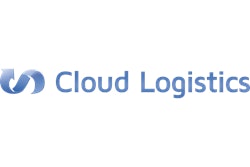
Newlyweds often concern themselves about that seven-year itch and scratching that itch is probably not a good idea. But in the world of transportation management systems (TMS), that itch starts creeping in at five years—sometimes as soon as three. The difference is that many shippers and third-party logistics providers (3PLs) realize that scratching the five-year TMS itch may be one of the best things they could do for their company.
To be clear, no one is talking about cheating. But the reality is that, for most companies, three years after installing a new TMS (or if you are a good negotiator, as many as five years), they have a decision to make. Owners of on-premise solutions face end-of-life letters and are forced to perform a time-consuming, often risky upgrade. For those that deployed a software-as-a-service (SaaS) TMS, initial agreements expire in three to five years. Renewal often means a significant price increase from the deep discount shippers may have received during the initial sales process.
Stay or Leave?
The TMS dilemma facing these companies is the certainty of the known vs. the temptation of what may be a better solution. The reasons to stay are obvious: There is little to no risk, little need for change management and minimal integration efforts. The only cost is how much more the TMS vendor increases the subscription rate now that you are locked in and don’t feel like making a change. For those with an on-premise TMS, the cost, the liability and the effort levels can be pretty high.
In a supply chain industry filled with volatility and risk, why would anyone choose to leave? The answers may surprise you. The three factors that drive the decision to change are cost, innovation, and increased employee satisfaction and productivity.
Cost
Migrating from an old, cloud-based TMS to a new one may actually save money. Software vendors are relatively predictable. In a competitive sales process, they usually offer a steeply discounted subscription (or license) price. When the first contract is up, most companies have little interest in changing and don’t bring in a competitive solution to keep the vendor honest. At that point, the company is going to pay more.
Newer TMS solutions are built on open-source technologies, have lighter weight infrastructures and are simply cheaper to maintain. When you factor this technological reality into the competitive selection process, there is a very high probability the company will save money when switching to a newer, modern solution (even after factoring in the cost of implementing a new system, which can often be rolled into the cost of the new subscription).
Innovation
Let’s face it—the TMS industry is not a young, dynamic one. It’s been kicking around for decades. There are a lot of older, more mature solutions that were first built right after Windows XP was released (2001). A company approaching an upgrade or subscription renewal today is probably running something that looks like Windows XP—or even Windows 95! While that TMS may be very capable, is it forward leaning? Is the existing vendor pushing the envelope on usability, leveraging new paradigms like social networking and looking to break existing molds of thinking?
If you spend any time evaluating one of the handful of new vendors to emerge on the marketplace in the last couple of years, you will find they are far more innovative in their approach to systems than your current vendor. Why? Because they have to be. A software company looking to shake things up, and break the status quo must find new and groundbreaking approaches to doing business, or they simply won’t be around for long.
As a shipper, you benefit from these innovations. Some innovations may be functional—carrier selection optimization, collaboration platforms and the deployment of better mobile solutions to mom-and-pop carriers. Other innovations are more subtle, from the smart use of open-source technologies to an application’s increased usability. Which brings up the third reason a shipper or 3PL should consider scratching that itch:
Employee Satisfaction and Productivity
The COO of a major apparel company once told me that, while his supply chain software was functional, stable and effective, it simply looked old. When he brought 22 year-old college graduates in to interview, they would see the software they would be using all day, every day. It was bland, clunky and clumsy. “Quite frankly,” he confided, “it was a big turnoff in recruiting.” This turnoff couldn’t come at a worse time. A recent white paper from the University of Tennessee cites talent shortages at nearly every level of supply chain management.
The reality is, with the exceptions of the largest, most complex networks, managing transportation just shouldn’t be that hard. So why do most TMS solutions require up to 10 days of formal training, and then weeks or months of daily use to become proficient? Because most TMS solutions are designed to support only those most complex networks, leaving the vast majority of shippers with more normal needs stuck having to work around—and through—these systems.
Newly designed systems need to be familiar. They should look, act, and feel like what we use in our everyday lives. Intuitive design principles can result in training that lasts only two hours, proficiency in two days, and years of improved productivity and satisfaction.
Making the Move
Author Alice Kahn once said, “For a list of all the ways technology has failed to improve the quality of life, please press three.” The annoying computer that answers the phone when we call the cable company, your bank or pretty much any airline was once considered a time-saver, a money-saver, cutting edge and designed to improve customer satisfaction. Much like those systems, TMS systems designed 15 years ago are now costly, difficult to learn and simply unproductive. If you start feeling your five—or three—year TMS itch, it may be time to give it a scratch.




















